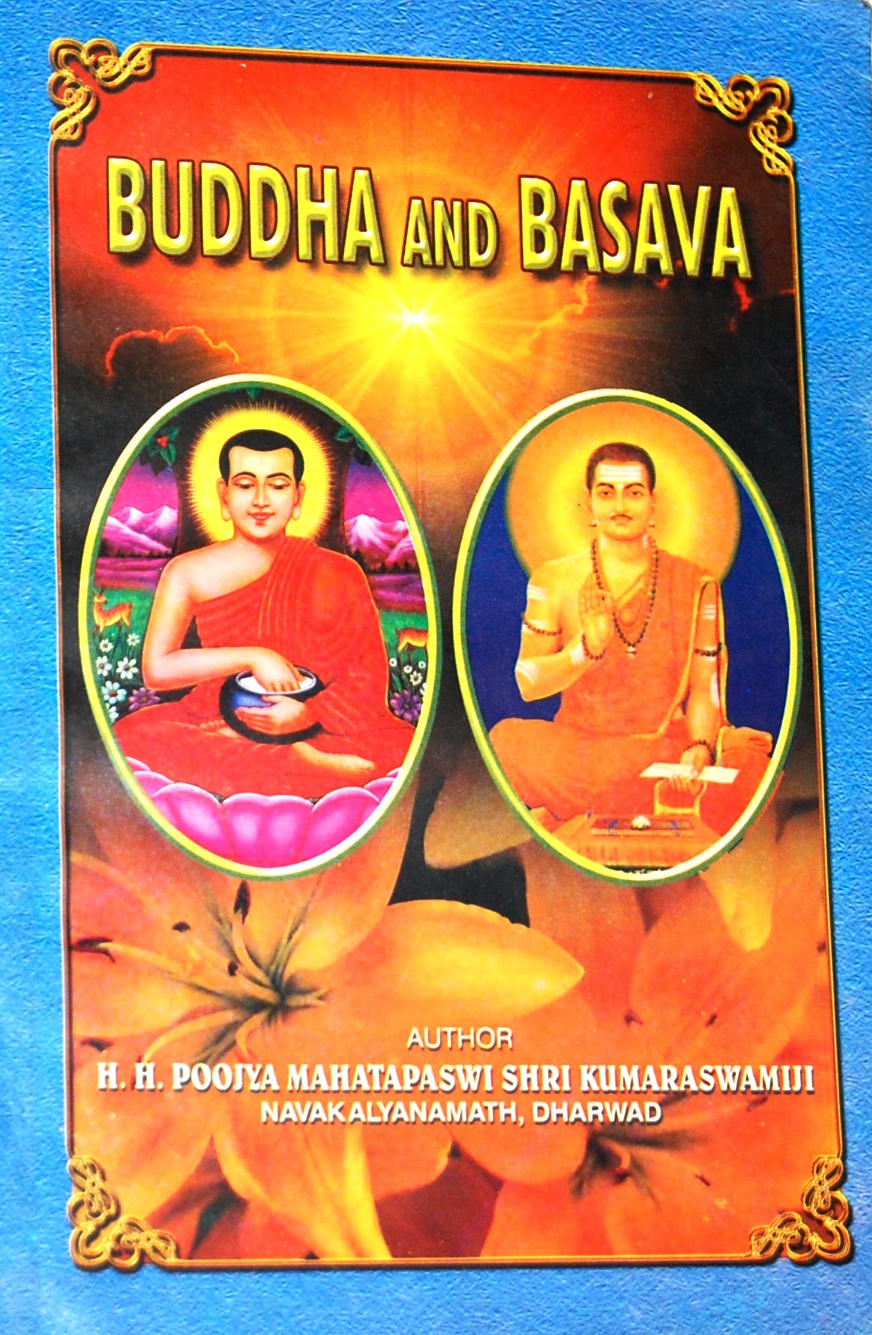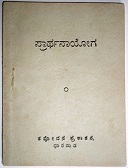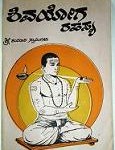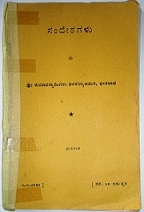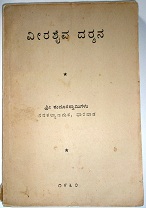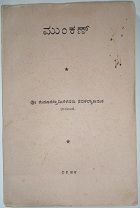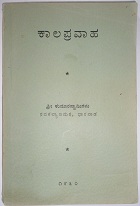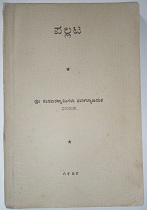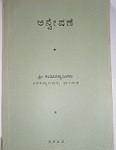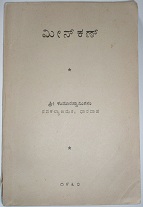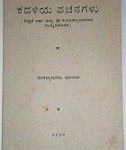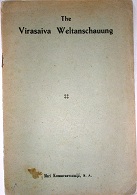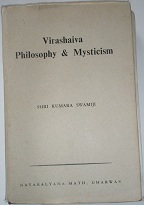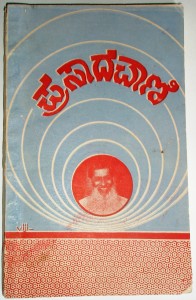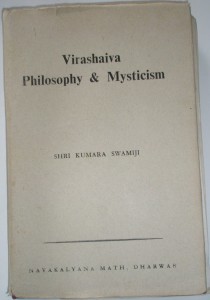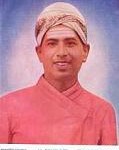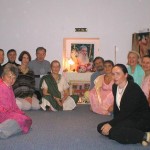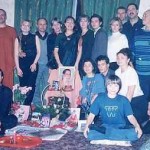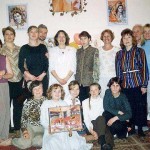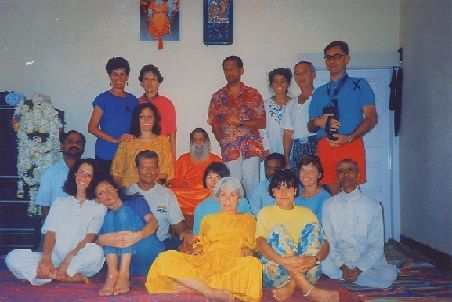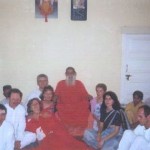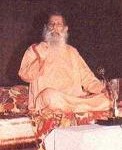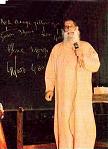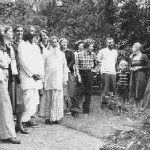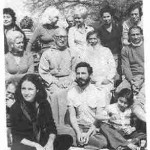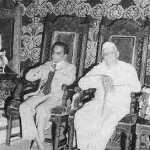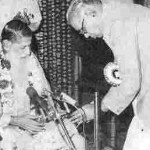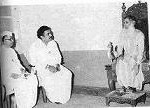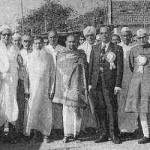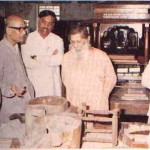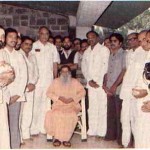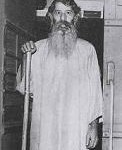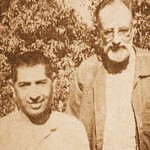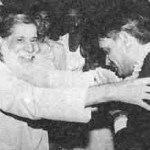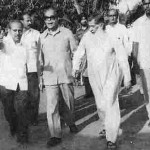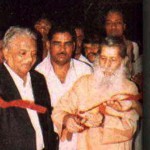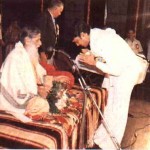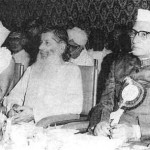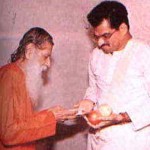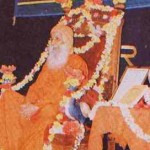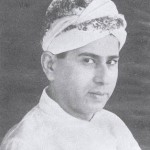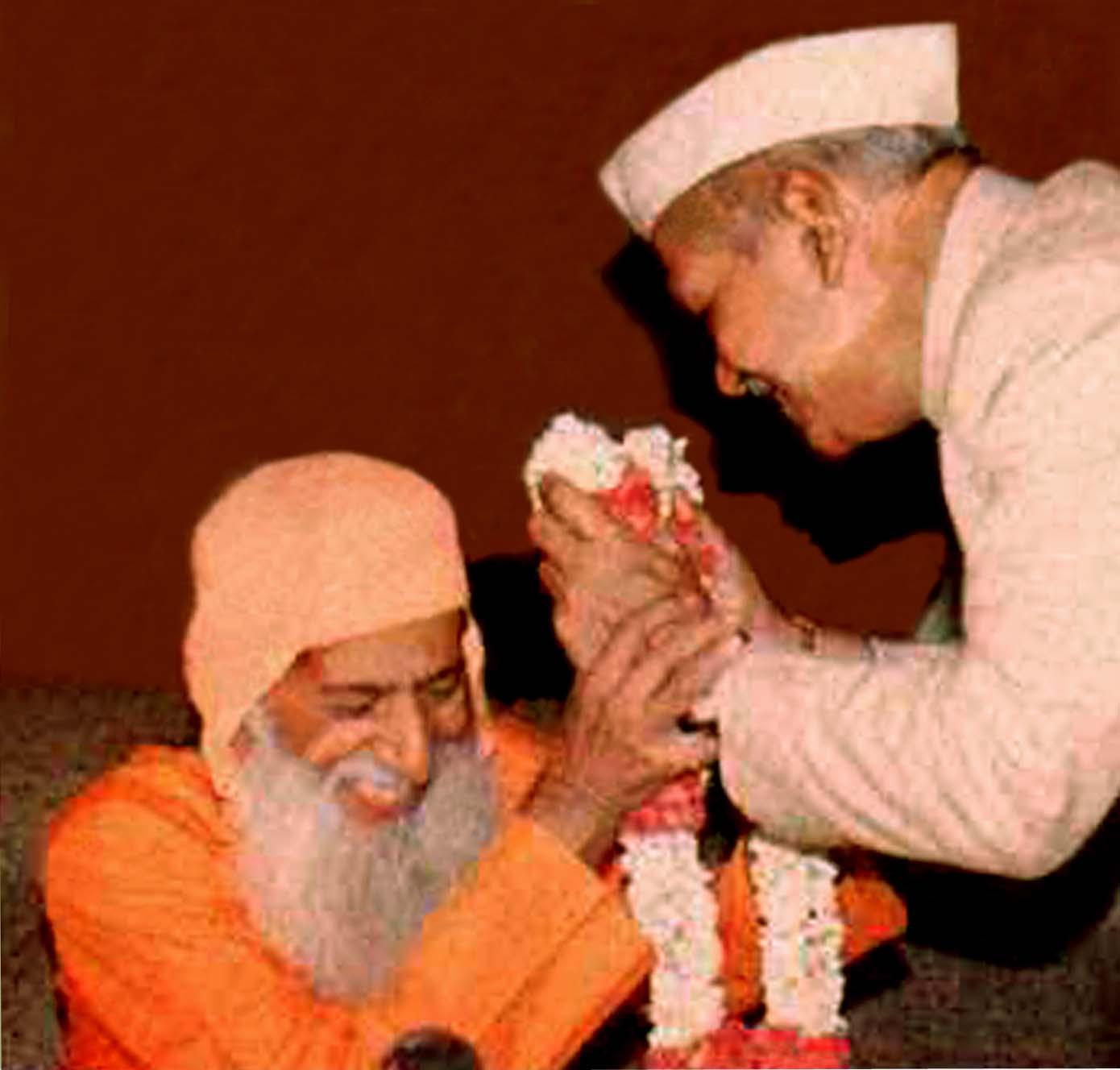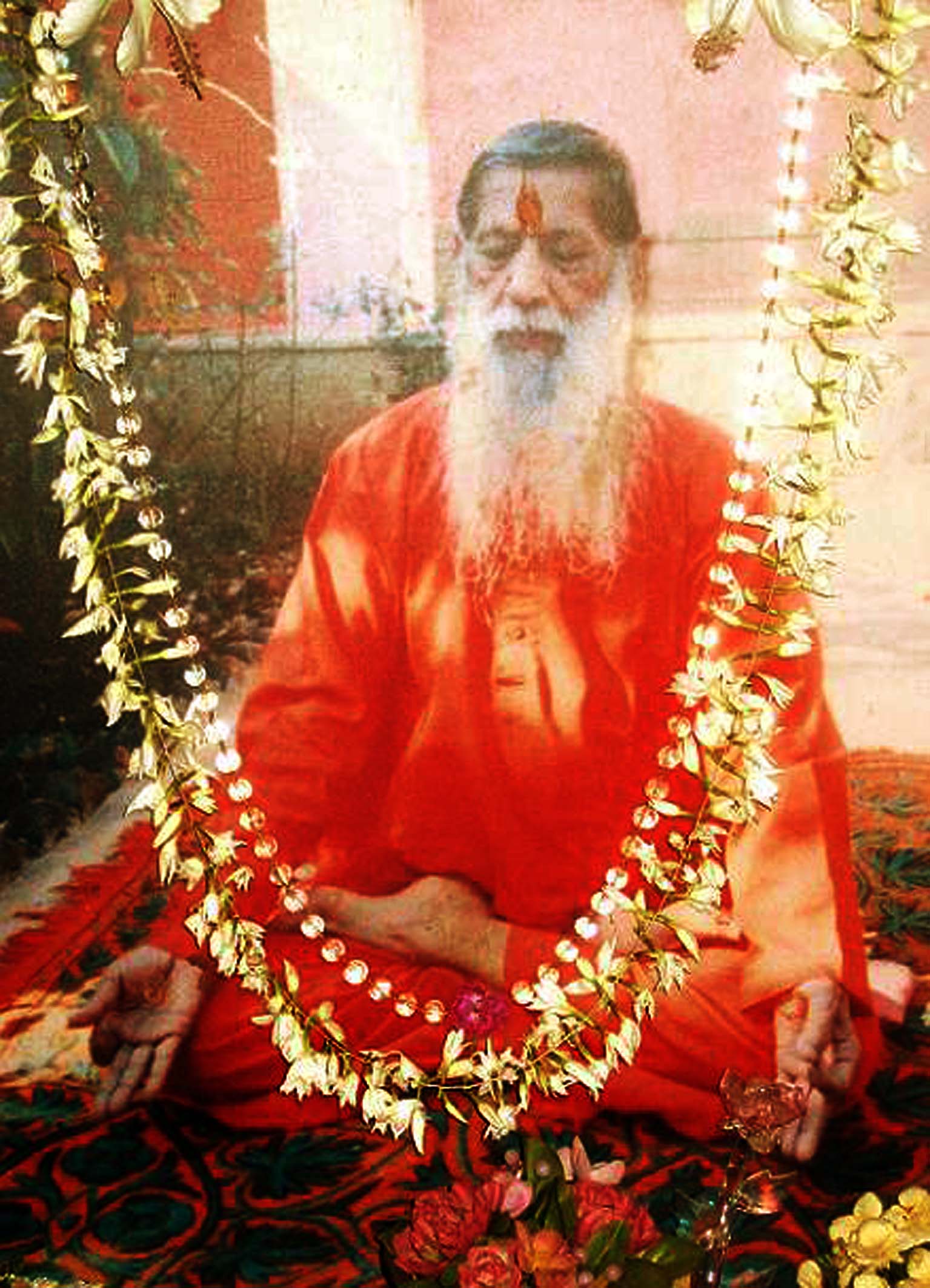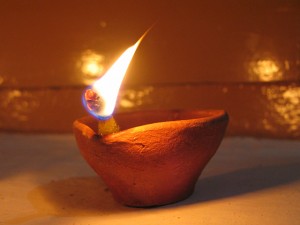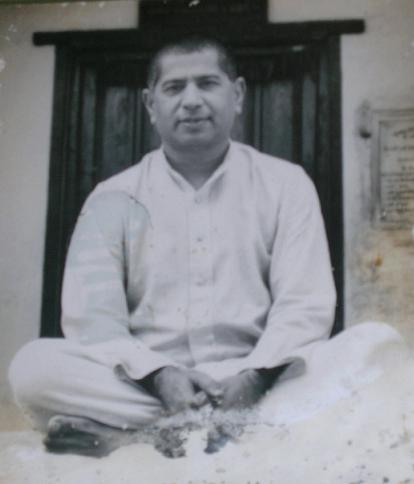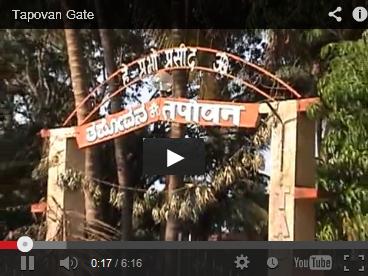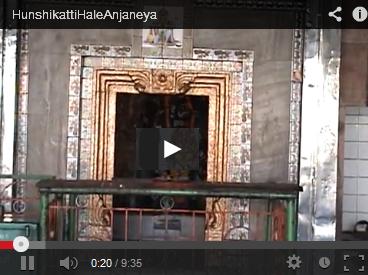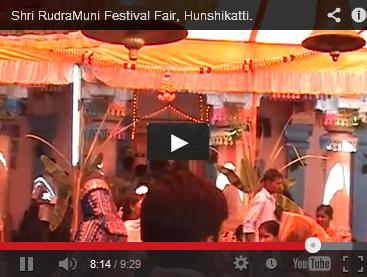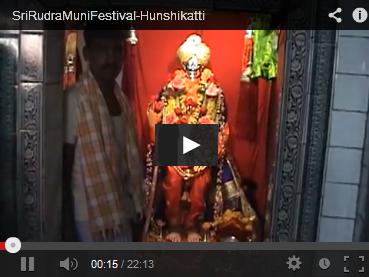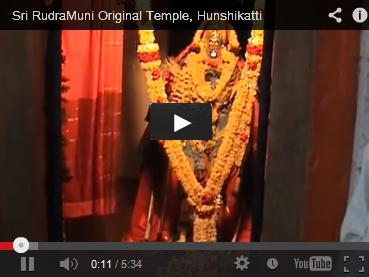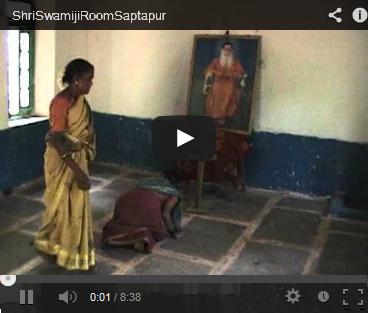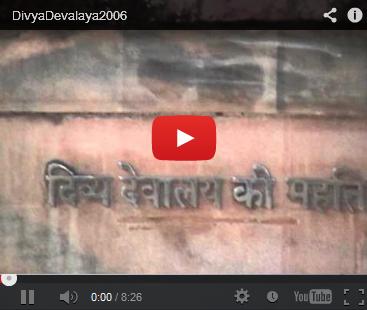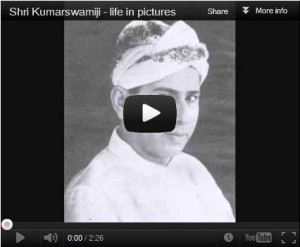Prabhu’s vachanas constitute the mystic’s accumulated wealth of experience, his richest acquisition and highest accomplishment. These values rank as the most precious spiritual heritage of India and mankind as a whole. In the loftiness of concept, in the display of wisdom, in the depth of insight, in the serenity of contemplation, in the austerity of discipline and in the beauty of expression, Prabhu’s sayings reflect a remarkable accomplishment of what is divine and aesthetic in man. In the range of vision, in the reach of sympathy, in the versatility of power, Prabhu is a unique personality in the annals of the world’s mysticism.
Philosophy and art join hands so far as the fundamental basis is concerned, the basis being the viewing of life as idea. But, as a matter of fact, nothing can stand apart from life. No one can fully detach himself from life, any more than he can get rid of his past. That redemption, which is gained by the identification with life as Idea, cannot be final since there is an element of incompleteness with it. Undoubtedly, we gain peace through detachment. Mere peace, without the power to protect it, will not last longer. Hence there must also be a power that comes through domination. In other words, we must not only detach ourselves from the wordly processes seeing it as Idea, but we must also identify ourselves with it at the same time we become conscious of it, feel it as will and live our own will and not the world’s will. This domination of the world as will is the theme of yoga. Prabhu is a great yogi. He possesses extensive power to mould and shape the forces of life, for he participates in the Divine will or chit-shakti. Yoga is both an art as well as a science. Prabhu is an artist if yoga is an art. The Greek art epoch, when Phidias created the magnificent Parthenon, is reckoned to be the most glorious period. At that time, Greece was full of the statues of Gods. Each of these statues was created from a living model, and each statue represented a cosmic concept of the artist. Pallas Athena, the goddess of wisdom, was not merely a beautiful maid to the artist, she represented to him an embodiment of the Divine wisdom “mightily and sweetly ordering things”. Apollo was not just a handsome muscular youth but rather a divine inspiration in the artist’s heart. The great artists when they carved and chiselled the stones, they were endeavouring to give concrete forms to their ethical concepts. Ethical concepts are inseparable from art. This inseparability becomes all the more insistent and important in mystic literature. The life of a mystic teaches full-fledged morality and is benevolent to the society.
Many sayings of Prabhu are replete with ethical concepts and moral etiquettes. Prabhu insists on the moral virtues, the assimilation of which leads to spiritual realization. The greatest artist is the most religious, closest to God. The greatest artist is always a devout personage. The true artists are nearer to God. God breathes life into them and through it comes the blessings of God. The triumph of art is neither the true presentation of nature, nor the crystallization of emotion and thought, nor even the representation of the idealized image of truth. It is the expression of the Divine life and will. The vocation of the artist is very sacred, for he thus has to comprehend the working of God and interpret it for the benefit of the mankind. All honour to him who treats it sacredly; who studies and interprets the thoughts of God as expressed to him and designs all things to reveal the patterns of life as embodied in the God’s will. Philosophy dismembered from art loses its beauty, charm and joy. On the other hand, philosophy blended with art, becomes transformed into rational mysticism. We then have to study the saints, the mystics and the martyrs of thought letting their radiant spirit penetrate through our hearts and souls and partake of the noblest pleasures of life. Art is sometimes defined as the soul of things. Wagner, who says that mystic expressions are eternal, ideal and infinite, accomplishes this by getting at the soul of things through music. Rabindranath Tagore further clarifies this by saying, “Music in the purest form becomes one with the spirit least encumbered with anything extraneous. We seem to feel the manifestation of the infinite in the finite forms of creation, music itself being silent and visible.” The universe itself is a poem of the infinite, a song of the eternal, a creation of the eternal artist. Hence God is the creator and the Divine artist. Whatever the human artist creates, there is something of the totality of the universe in it. May be as Blake so eloquently points out:
“To see the world in a grain of sand
And Heaven in a wild flower
Hold infinity in the palm of your hand
And eternity in an hour.”
The artist deals with the totality of things. A poem is an expression in words, a statue is an expression in stone or a metal and a symphony is an expression in musical notes and sounds. All represent the transformations of artist’s manifested interpretation of the Divine thought. Thus, there is a subtle underlining unity among all artistic transformations. This unity can be sensed by grasping the reality. To grasp the reality, the artist must possess a keener sensitivity; his sensorium must be much more systematically attuned than that of an ordinary person. A camera can capture a scene more accurately and faithfully than an artist. However the artist transforms what he sees with the faculty of his emotions, mind, imagination, intuition and spirit itself. The whole nature of the artist has to be brought to bear upon the work of transformation. That is why the artist, if he is to do his work accurately and faithfully, must see that his mind is well-trained, his emotions are delicate and balanced, his intuitins are evenly balanced and that the power of his Spirit is not dormant but dynamic. Prabhu’s writings reveal his genius, emotional stability, balanced intuitions and ability to faithfully depict and transform his observations, experiences and Divine thought. The gifted artist he is, he does not mince; nor does he misuse words, nor does he use excessive verbiage. In a broad sense, the function of art is threefold – aesthetic, intellectual or instructive and spiritual.
Aristotle attributes a great value to tragedy because of its purifying influence. However, he fails to distinguish between passion and emotion. Tragedy purifies passion while beauty purifies emotion. The effect of tragedy is catharsis, which is closely akin to the Chitta Shuddhi (purification of the heart). Aristotle’s concept is of wider application and constitutes the aesthetic aspect of art. The aesthetic sense raises and purifies conduct by instilling a distaste for the crude desires and crass passions, and indirectly helping man to develop his sense of morality. The educative value of art lies in training the imaginative, creative and sympathetic side of intellect. Poetry, music, literature, study of man and his creations help train his intellect. Poetry raises emotions and gives each its own distinctive delight. Painting and sculpture, on the other hand, still the emotions and teach them the delight of a restrained and limited satisfaction. Music deepens emotions and harmonizes with each other. They make and maintain the movements of the mind purified, deep and harmonious. The spiritual value of art lies in expressing the deeper reality of things, the joy of God and the manifestation of the divine power. If the artist has this spiritual vision, he can see the Truth brooding in action, active in thought, energetic in stillness and creative in repose. Prabhu is a great spiritual artist, because his sayings spiritually uplift, purify and transform all into heavenly love and delight. A drop of this nectar dropped into a man’s heart transforms his life and action.
Prabhu’s vachanas constitute the mystic’s accumulated wealth of experience, his richest acquisition and highest accomplishment. These values rank as the most precious spiritual heritage of India and mankind as a whole. In the loftiness of concept, in the display of wisdom, in the depth of insight, in the serenity of contemplation, in the austerity of discipline and in the beauty of expression, Prabhu’s sayings reflect a remarkable accomplishment of what is divine and aesthetic in man. In the range of vision, in the reach of sympathy, in the versatility of power, Prabhu is a unique personality in the annals of the world’s mysticism.
The following vachanas bear an eloquent testimony to the genius of Allama Prabhu:
“Oh Lord, this is the true height of the form
of the undivided Absolute Divine;
It’s neither form nor formlessness
This undivided form of the Absolute;
It’s neither time nor timelessness,
It’s neither of this nor the other world;
Not touched by sorrow or by joy;
Above all merit and all sin;
It’s neither cause nor consequence;
Not bound by duty or by works;
Not worshipped nor the worshipper
Thus, being beyond all sense of Twain;
He shines – our Guheshwaralinga!”
“My body I have made a garden,
My mind a spade
I have dug up illusion’s weeds,
Broken up the clods of worldliness,
Harrowed the earth, and sown the Spirit’s seed.”
“The thousand-petalled lotus is my well,
My water-wheel, my breath;
From my subtle nerve I have channelled the water.”
“And to keep out the five Bulls of sense
That might trample my crops,
I have set up all round Patience and poise as fence.
Behold, Oh! Guheshwara!
Night and day I have lain awake To protect my tender plants.”
“When Grace strikes,
A clod of earth is turned to a pile of gold
The common stone is charged with alchemy.
When Grace strikes.
The fortune that, for years and years,
I sought, look!
Now flashes upon my sight!
There, in a temple buried in earth,
I have seen a Gem.
And cast my pest behind me
Forever, Oh, Guheshwara!”
“Not thine the earth, not thine the gold,
Not thine the woman you love;
That’s only the curse
The world is heir to
The gem of Knowledge is what you own.
Do wear that radiant gem, undimmed,
As ornament, and none
Except thee shall be rich,
Oh! Mind!”
“To a flowing stream
All body is legs;
To a burning fire
All body is tongues;
To a blowing wind
All body is hands
Oh! Guheshwara,
To your Sharana
The whole body is Linga!”
“I see none at all
with the body as bank,
Buttress it with mind,
with virtue for steps
And fill it all full
With water of Bliss.
Before you I declare
Guheshwara,
Forever shall stand
The tank I have built.”
“Where is the cuckoo, and where the mango-tree?
And yet they meet!
Where is the myrobalan, child of the hills,
And where the sea-bred salt?
And yet they meet!
Even so have we met, you and I Guheshwaralinga,
Even so!”
“He who, having known Reality, is past care;
The hero, vanquisher of Death;
The glorious, embodiment of the Most High;
The Blessed, who has attained the Bliss,
The perfect, who inhabits the void;
The incarnation, Self-begot.
Who has the perfect poise,
Guheshwara.”
As a spark in stone,
As an image in water,
As a tree in the seed;
As silence in speech,
So thou in Thy devotee,
Oh! Guheshwara.
Who is the Engineer that has moulded
This doll of clay,
Draped it in a fabric of water,
Bound to it, in diverse states of life,
A jingle of tinkling bells;
Dowered in with air and fire.
Crowned it with adornments,
And now sets it playing?
When this formless one has been bound to form
When you have attained the self
And made it the temple of the Divine,
There is no more one and two,
Oh! Guheshwara.
Unimaginable the light in the eye!
Indescribable the ring in the ear!
Incomparable the taste on the tongue!
Immeasurable the peace
Of the inconceivable central nerve!
Everywhere you will find Him;
In minute particles of dust,
In the hard wood,
Or tender blade of grass,
Everywhere He is!
The subtle, the imperishable, the unchanging
Guheshwara!
Oh! tell me who you are
Who lean upon your palm
Your sad dishevelled head
And thread of pearls of tears.
The word they speak
Is the effulgent Linga;
The sound they make
Is the Supreme law.
When palate and lips
Conspire in the mouth,
You have that which transcends
Nada, Bindu, Kala.
Listen. Oh! fool!
Guheshwara’s devotes,
Even though they speak,
Are immaculate!
What shall I say of those
Who throng in flocks to this
Vast market of a world?
The trade is varied here,
Yet, nothing’s bought or sold;
It’s only a vanity fair!
Was it a half-mad god
That made this quite mad world?
I wonder, Oh, Guheshwara!
Thy power abides in the universe,
The universal power in Thee;
Therefore, I am amazed to see
This breach between the world and Thee.
I blush to think that once of your,
Thou didst consume the triple town,
It makes me sick to see Thy pride
Of having burnt the god of love
And earned a paltry title-name!
Even if Thou burn out Death itself,
And flaunt his ash upon Thy brow,
Thy feat does only make me laugh!
Oh! Guheshwara, should Thou open
The fury of Thy forehead eye,
The sole of my foot shall welcome it.
Behold the indeterminate trance
Wherein the sense of Twain is gone!
Behold the light within the light lost!
Never before had I beheld
Extinguished both the sun and the moon!
No light, but only the splendour of the light!
Oh! Guheshwara
Of Siddharamayya’s high eminence.
This poem of Wordsworth appears to be an appropriate commentary upon the inderminate trance of Allama Prabhu:
“The blessed mood in which the burden of mystery
In which the heavy and weary weight of all this
Unintelligible world is lightened.
That serene and blessed mood in which the affections
Gently lead us on
Until the breath of this corporeal frame and even
The motion of our human blood is almost suspended.
We are laid asleep in body and become a living soul
While with an eye made quiet by the power of harmony
And the deep power of joy we see in the life of things.”
This article – ‘Allama Prabhu – A Literary Genius – II’ – is taken from H.H.Mahatapasvi Shri Kumarswamiji-s book, ‘Prophets of Veerashaivism’.











